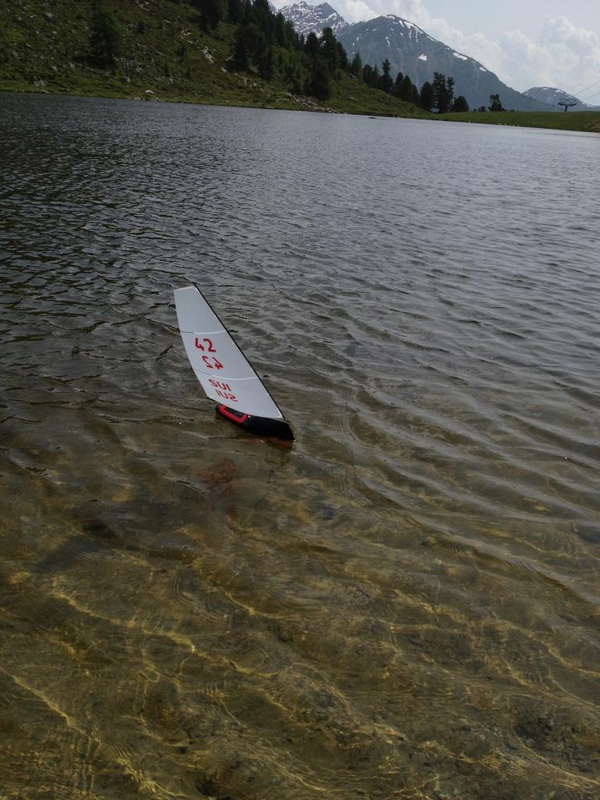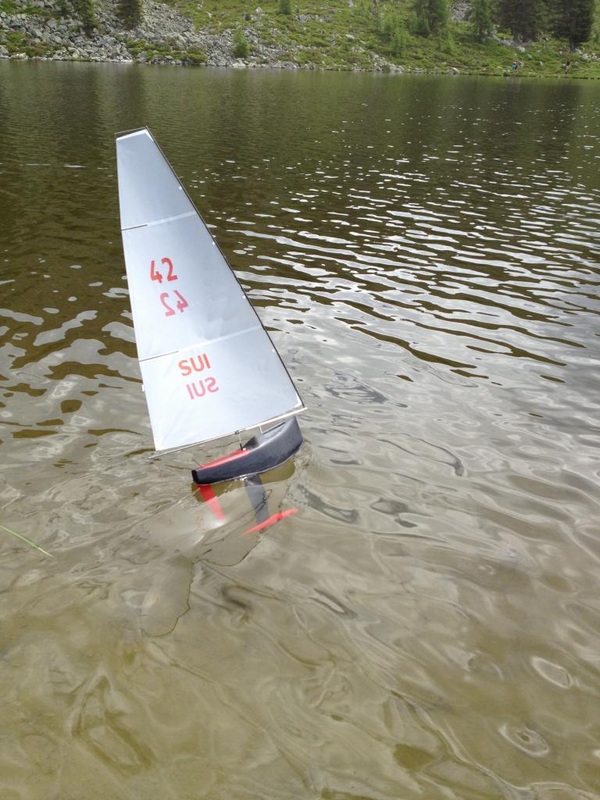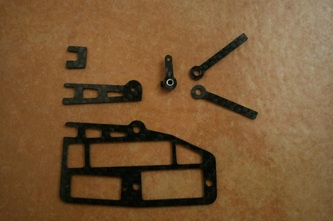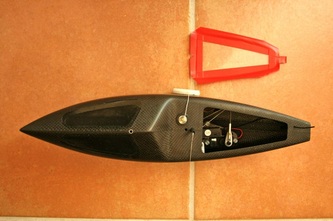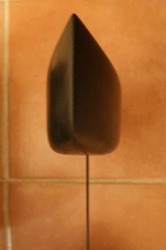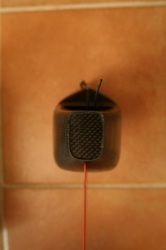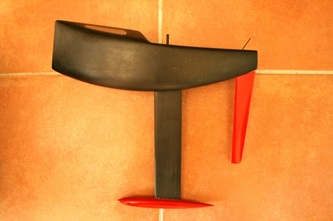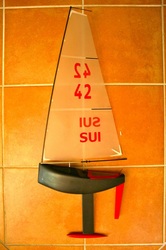SliM - Suisse 42 - by Phil Tyler
Hull 70 g revised to 40g
Rig 20 g Servos, Rx, Tray 38 g Ballast 330 g revised to 300g with 40g hull Keel 20 g Rudder, Arm, Push rod 6 g Battery 30 g Total 514 g Ballast ratio 64% LOA 335 mm Beam 80 mm Years ago, while sailing full size
dinghies, I can remember being advised to sail a properly tried and
tested boat in a regatta. Although this advice is probably perfectly
valid for model yachts too, I’m afraid I didn’t follow this
advice for the Footy Gold Cup in Le Havre! In fact I didn’t follow
that advice trying the BoX 4 when sailing in Sestriere for the
previous year’s Gold Cup either. However, it made me feel much
better to see a significant number of other skippers with new boats
at both of these regattas.
|
Phil Tyler
has spent many years sailing dinghies, windsurfers, catamarans and keelboats. Although originally based in England, is fortunate to have had plenty of opportunities to sail in many other parts of the word. Since moving to Switzerland in 2002, discovered radio controlled model yachting. Most recently the Footy has appealed as an economical, easily transportable and great design, build and sail ‘development’ class. |
May be this should be considered as an appropriate approach to Footy development and illustrates the great ingenuity and constant quest to try new ideas which so typifies this class. Camillo Giammarco (ITA) must take the award for the most
adventurous ‘out of the box’ thinking in achieving his double
diagonal, reverse bow hull with an overall length of over 400mm which
actually fits in the box!
Following the Footy Gold Cup in Sestriere, I was very impressed by the performance of the ICE (GBR) and Urca (ITA) designs. I also had an opportunity to sail Thomas Grimm’s Orca (GER), which inspired the development of a similarly slim line ‘diagonal’ hull, hence the SliM project started.
In Le Havre I discovered the SliM proved to have very good up-wind speed, particularly when ‘powered up’, but down-wind speed wasn’t as pleasing. I’m sure that some of the down-wind issues were due to my sailing but there are also some design modifications worth considering in an attempt to improve down-wind speed.
Roberto Broccoletti posted a short YouTube clip of the latter part of race 30 from Le Havre, illustrating this issue quite clearly. SliM led at the windward mark but was overhauled at the leeward mark by Rob Vice’s ICE and Claudio Vigada’s Urca. However, the SliM just managed to sneak back the advantage on the next up-wind leg. SliM was relatively quick up-wind but relatively slow down-wind.
Following the Footy Gold Cup in Sestriere, I was very impressed by the performance of the ICE (GBR) and Urca (ITA) designs. I also had an opportunity to sail Thomas Grimm’s Orca (GER), which inspired the development of a similarly slim line ‘diagonal’ hull, hence the SliM project started.
In Le Havre I discovered the SliM proved to have very good up-wind speed, particularly when ‘powered up’, but down-wind speed wasn’t as pleasing. I’m sure that some of the down-wind issues were due to my sailing but there are also some design modifications worth considering in an attempt to improve down-wind speed.
Roberto Broccoletti posted a short YouTube clip of the latter part of race 30 from Le Havre, illustrating this issue quite clearly. SliM led at the windward mark but was overhauled at the leeward mark by Rob Vice’s ICE and Claudio Vigada’s Urca. However, the SliM just managed to sneak back the advantage on the next up-wind leg. SliM was relatively quick up-wind but relatively slow down-wind.
Pictures from the Swiss ski resort of Nendaz at just over 2000 m with the best camera I had available - my Iphone. The sail has a 750 mm luff, a 410 mm foot and a 70 mm head designed to fit into the UK’s experimental sail measurement grid
My current thinking on development is to retain the reasonably good ballast ratio at well over 60% by balancing above the water line and below the water line weight reductions. My first targets are to:
1/ Reduce Hull weight to <50 g
This was a particularly frustrating aspect to changing from the sub 20 g Depron construction of the BoX to my early attempts at a laminated hull construction. However, as my laminating skills improve and I tried using a mould, hull weights have reduced from 99 g for the prototype to 70 g for the first production hull. I think a further saving of approx 30 g is very realistic as the 70 g hull is far too strong! Two layers of carbon and two layers of Glass have proved to be much more than is necessary. I will be trying a single layer of carbon with reinforcing around the deck access, a narrower and lighter carbon tape to join the hull halves together, retaining a layer of glass tissue to reduce the chance of ‘pin holes’ and more time spent brushing out excess epoxy from the lay-up. Vacuum bagging must be the next step in reducing excess resin but I’d need to re-think some features of the mould design and that’ll have to wait until I’m ready to produce a modified hull shape for SliM 2.
2/ Reduce Ballast weight to 300 g
Seeing the beautifully super slim profile of the ballast on a Peter J Henderson (GBR) 1299 provided the impetus to me planning to spend a little more time preparing a more streamlined ballast. I had also been following the RC Sailing forum “Karo” post by Erik Jankovic (SLO) experimenting with ballasts of 300g and 350 g, which seemed to work well.
Although the combined Ballast and fin weight of 350 g for the SliM provides plenty of power up wind, I think a reduction of 30 g in the ballast, combined with a saving of 30 g from the hull will help improve down-wind speed without impacting up-wind performance.
In the longer term, there are some changes to the current hull shape requiring careful consideration before committing to the production of a new mould for SliM 2. Having put so much time and effort into producing my first mould, short-term development will be limited to the existing hull shape.
1/ Reduce Hull weight to <50 g
This was a particularly frustrating aspect to changing from the sub 20 g Depron construction of the BoX to my early attempts at a laminated hull construction. However, as my laminating skills improve and I tried using a mould, hull weights have reduced from 99 g for the prototype to 70 g for the first production hull. I think a further saving of approx 30 g is very realistic as the 70 g hull is far too strong! Two layers of carbon and two layers of Glass have proved to be much more than is necessary. I will be trying a single layer of carbon with reinforcing around the deck access, a narrower and lighter carbon tape to join the hull halves together, retaining a layer of glass tissue to reduce the chance of ‘pin holes’ and more time spent brushing out excess epoxy from the lay-up. Vacuum bagging must be the next step in reducing excess resin but I’d need to re-think some features of the mould design and that’ll have to wait until I’m ready to produce a modified hull shape for SliM 2.
2/ Reduce Ballast weight to 300 g
Seeing the beautifully super slim profile of the ballast on a Peter J Henderson (GBR) 1299 provided the impetus to me planning to spend a little more time preparing a more streamlined ballast. I had also been following the RC Sailing forum “Karo” post by Erik Jankovic (SLO) experimenting with ballasts of 300g and 350 g, which seemed to work well.
Although the combined Ballast and fin weight of 350 g for the SliM provides plenty of power up wind, I think a reduction of 30 g in the ballast, combined with a saving of 30 g from the hull will help improve down-wind speed without impacting up-wind performance.
In the longer term, there are some changes to the current hull shape requiring careful consideration before committing to the production of a new mould for SliM 2. Having put so much time and effort into producing my first mould, short-term development will be limited to the existing hull shape.


